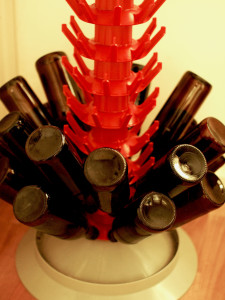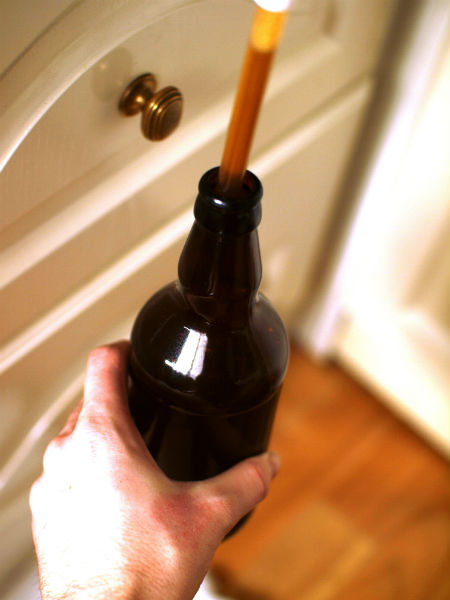A Guide To Bottling Beer

Hassle Free Bottling Of Your Beer
First of all, as the beer has finished fermenting we need everything that comes into contact with it to be clean and sanitised. If you have a bottling bucket fill it up with your sanitising solution and throw in everything you’ll be using to rack and bottle the beer; this includes syphon tubing, canes, bottling wands and anything else you might need. Once everything is clean and sanitised you can begin.
To begin we need to prepare a priming sugar addition to add to the beer so when it’s bottled it achieves the correct level of carbonation, use the information laid out above to find how much priming sugar you need. Add the correct amount of sugar to a clean pan along with twice the amount of water to sugar, with the lid on, heat the liquid up to boiling point to dissolve the sugar and sanitise the liquid. Boil for 5 minutes or so and then remove from the heat and allow to cool down.
Prepare The Bottles
Whilst this is occurring you can begin sanitising the bottles, bearing in mind they should already have been cleaned. If you have a bottling tree and bottle sanitiser then you’re in for a smooth sail, fill the bottle injector up with no-rinse sanitiser and start pumping sanitiser into the bottles, a couple of squirts should be fine. Place these on the bottle tree and work your way through all the remaining bottles. Sanitise the caps in a bowl of no rinse sanitiser ready to go for when the bottles are filled
If you don’t have the bottling tree and injector then you will need to fill each of the bottles with sanitiser by hand and then drain and rinse manually. This way is fine but if you don’t use no-rinse sanitiser you’ll need to spend extra time making sure the bottles are free from sanitiser, the whole process will take more time but is just as effective. Caps can be sanitised at this point as well.
Once everything is sanitised, and rinsed where necessary, it’s time to transfer the beer to the bottling bucket if you are using one. Add the now cooled priming sugar solution to the bottling bucket and then syphon the beer on top of this being careful not to disturb the sediment on the bottom or introduce oxygen by splashing or bubbling the beer. The process of syphoning should do a good job of mixing the sugar solution and beer together. If you aren’t using a bottling bucket you will need to carefully stir the priming sugar in using a sanitised spoon.
Now it’s time to fill the bottles, attach the bottling wand to the tap of the bottling bucket open the tap and start filling bottles by pressing the tip of the bottling wand on the bottom of the bottle. If you aren’t using a bottling bucket with a tap it will be slightly more tricky but entirely possible to attach the bottling wand to the end of a syphon tube and use this method to fill bottles.
Once a bottle is filled place a crown cap in the capper and seal the bottles as you go along, this reduces contact with the air and stops you from spilling any beer. Work your way through all the bottles, label them up so you know what they are and when they were brewed then store them away for a few weeks.
What To Avoid When Bottling Beer
Oxygen is not a friend to beer, it will shorten the shelf life and introduce unwanted stale flavours. The whole task of bottling opens up a lot of opportunities for air to get in the beer. As much as possible you want to avoid splashing, bubbling or general contact with the atmosphere, this is why bottling wands are so good because they fill the bottles from the bottom. When you syphon keep the ends of the hose submerged to there is no splashing and cap those bottles as soon as convenient to keep the oxygen out
Bottling means a lot of cleaning we want to be as thorough as possible, each bottle needs to be clean and sanitised along with all the other equipment used for bottling. Keep your gear and environment clean and hygienic to avoid spoiling your beer.
Bottling is a chore, believe me I know, but don’t rush and invest in equipment like a bottling tree and bottle sanitiser if you can to make it easier.
Finally, always remember there is nothing as enjoyable as cracking open a bottle of your own beer after a long day at work, at the beach or giving them away to friends so keep this in mind during the arduous bottling process.

